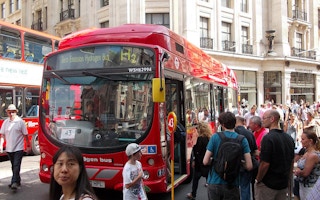Fuel cell vehicles (FCV) in China are expected to develop faster in terms of commercialisation following a multilateral project launched by the United Nations Development Programme (UNDP), the Ministry of Science and Technology (MOST), the Ministry of Finance and several provincial governments in Beijing on Aug. 31.
The project, called “Accelerating the Development and Commercialisation of Fuel Cell Vehicles in China,” is the third phase of a continuous scheme called Global Environmental Facility Fuel Cell Bus Commercialisation.
In the first two phases, 12 prototype fuel cell buses manufactured by Daimler-Chrysler, SAIC Motor and Foton completed a combined distance of 262,338 km and served a total of 126,586 passengers during the 2008 Beijing Olympics and the 2010 Shanghai Expo. The 12 buses helped reduce 400 tons of carbon dioxide and significant amount of nitrogen oxides, carbon monoxide and sulfur oxides, according to MOST statistics.
“
With its great dependency on fossil fuels, China faces a great challenge in reducing its greenhouse emissions and tackling its air pollution.
Patrick Haverman, deputy country director, UNDP China
Fuel cells in vehicles use compressed hydrogen and oxygen from the air to generate electricity for the motor. As a result, fuel cell vehicles have zero emissions and only emit water and heat.
“With its great dependency on fossil fuels, China faces a great challenge in reducing its greenhouse emissions and tackling its air pollution,” said Patrick Haverman, deputy country director of the UNDP China.
Calling FCV a “futuristic technology,” he said that FCV represents an innovative solution to help mitigate impacts of climate change in China while improving the lives of many.
He also addressed that the barriers hindering such progress include flawed hydrogen-based infrastructure, obsolete policies, little legal supporting framework and a lack of public awareness.
Many Chinese automakers already have fuel cell vehicles in their products catalogue. As for infrastructure, China now has three FCV hydrogen filling stations – in Beijing, Shanghai, and Zhengzhou, Henan Province, — with a fourth one currently being built in Foshan, Guangdong Province.
The project will seek to use the FCV for passenger transport, logistics and post services in a handful of cities before promoting them for a wider range of uses nationwide.
This story was published with permission from China.org.cn

















